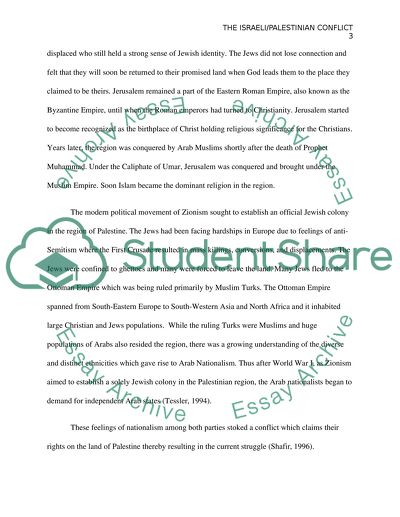Cite this document
(“The Israeli/Palestinian conflict Essay Example | Topics and Well Written Essays - 2000 words”, n.d.)
The Israeli/Palestinian conflict Essay Example | Topics and Well Written Essays - 2000 words. Retrieved from https://studentshare.org/history/1625443-the-israelipalestinian-conflict
The Israeli/Palestinian conflict Essay Example | Topics and Well Written Essays - 2000 words. Retrieved from https://studentshare.org/history/1625443-the-israelipalestinian-conflict
(The Israeli/Palestinian Conflict Essay Example | Topics and Well Written Essays - 2000 Words)
The Israeli/Palestinian Conflict Essay Example | Topics and Well Written Essays - 2000 Words. https://studentshare.org/history/1625443-the-israelipalestinian-conflict.
The Israeli/Palestinian Conflict Essay Example | Topics and Well Written Essays - 2000 Words. https://studentshare.org/history/1625443-the-israelipalestinian-conflict.
“The Israeli/Palestinian Conflict Essay Example | Topics and Well Written Essays - 2000 Words”, n.d. https://studentshare.org/history/1625443-the-israelipalestinian-conflict.


